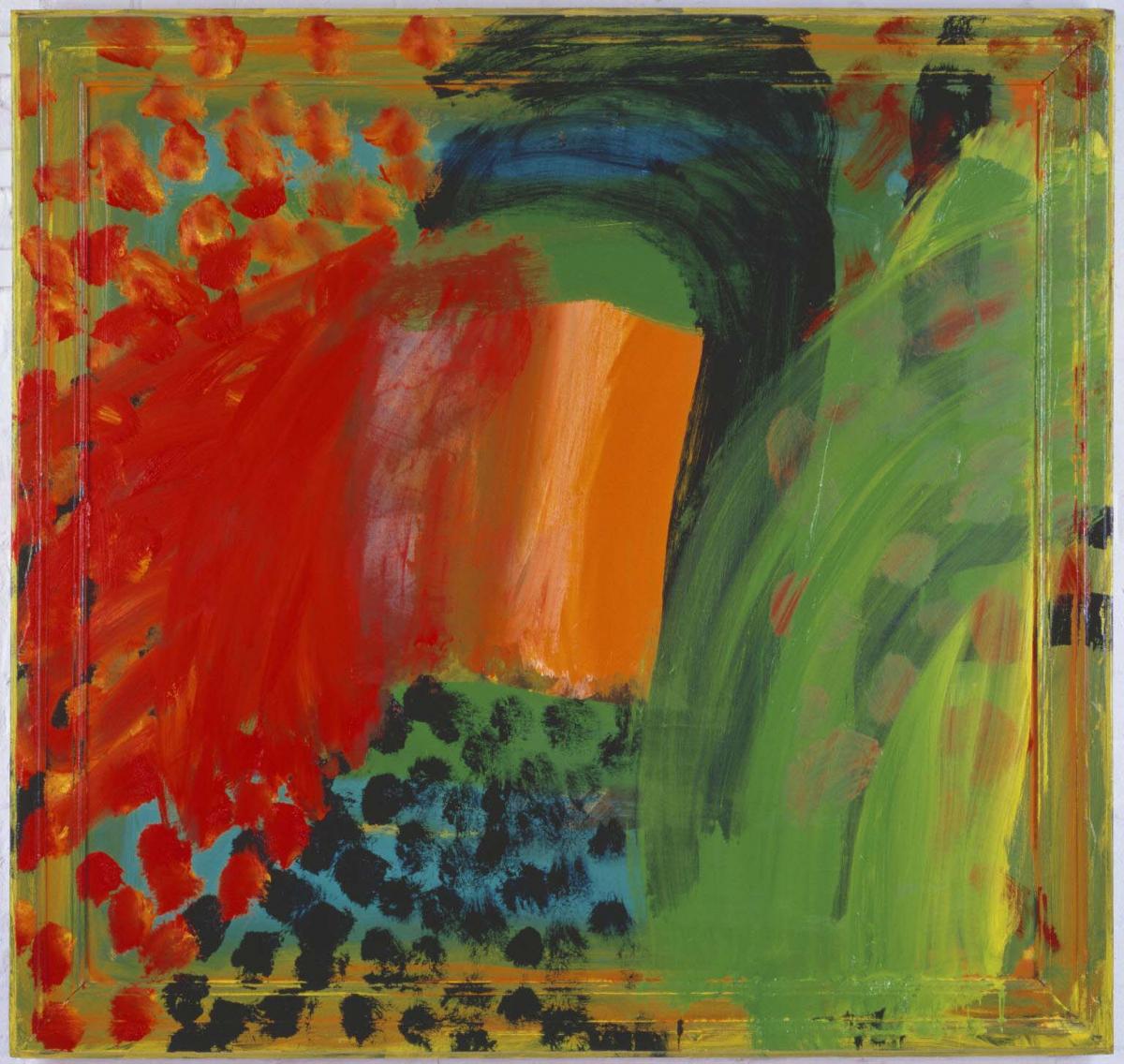Torso
Howard Hodgkin ( 2000 )

Howard Hodgkin dates the beginning of his life as an artist to New York from 1940 to 1943, when as a boy he became interested in pictures. Born in London, Hodgkin studied there at the Camberwell School of Art and at the Bath Academy of Art in Corsham. He was given his first museum retrospective at the Museum of Modern Art, Oxford, in 1976, represented Britain at the Venice Biennale in 1984, and was knighted in 1992. Yet, to this day, he believes his strongest audience is in America.
The Phillips Collection introduced Hodgkin’s work to American viewers in 1984 with an exhibition organized by the British Council and in 2001 acquired its first work by the artist. Hodgkin says his work deals with emotion, psychology, and memory. Like most of Hodgkin’s works of recent decades, Torso is painted on a wooden panel that melds seamlessly into its frame. Since 1972, he has made a practice of painting on wood. The physicality of the wood offers an emphatically fixed support for the gesture and richness of the artist’s layers of paint. It also reinforces the presence of the work as an object. Turning convention on its head, the actual frame becomes part of the painting’s support, while a painted frame is implicated in the work’s composition and subject. The resulting dialogue between surface and depth, pattern and illusion evokes landscapes or interiors, often with figures.
Torso reveals many stylistic characteristics of the artist’s work, from concentrated dabs of color superimposed on others that speak to Hodgkin’s admiration for Edouard Vuillard and Georges Seurat, to the broad, sweeping strokes with which he applies dazzling red and green with a bravura reminiscent of his fellow countrymen John Constable and Thomas Lawrence. The nearly sculptural presence of the orange form that occupies the center of the composition reminds us of Hodgkin’s abiding interest in the three-dimensional physicality of sculpture to which many of his paintings make reference. Because gesture is paramount in his painting, Hodgkin’s works appear to be quickly executed. Employing an approach that has been described as a mixture of passion and deliberation, however, Hodgkin often takes years to complete a painting. He tends to have many works in progress at any given time. Each results from carefully conceived and orchestrated brushwork, color, and pattern. The state of psychological and emotional tension that imbued his earliest works continues to be expressed in recent and seemingly nonrepresentational ones. As he himself put it, “I am a representational painter but not a painter of appearances. I paint representational pictures of emotional situations.”